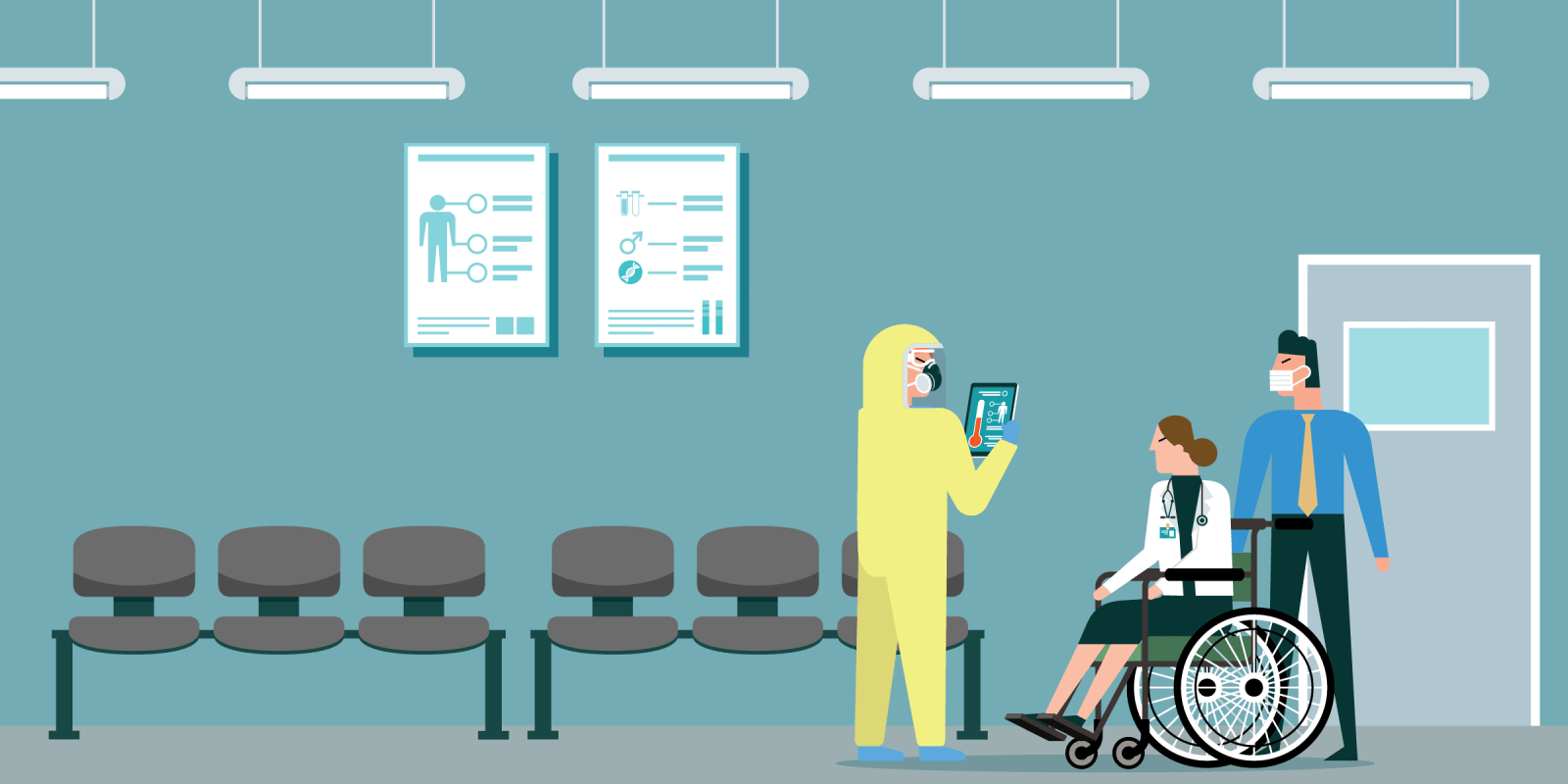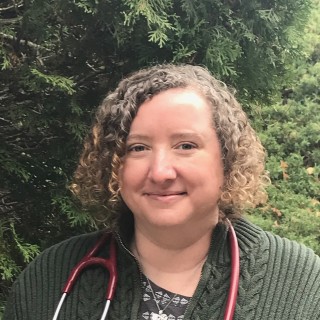 The COVID-19 pandemic has focused attention to those on the frontlines and their patients. However, this focus ignores those with chronic health needs and activity limitations. People with these conditions are left unable to seek or continue their care. They are avoiding the ER and dying at home. Needed surgeries are being postponed, leaving patients with continuing pain and disability. And for many, a fear exists of not only acquiring COVID-19, but of being denied a ventilator due to prejudicial views about the value of a disabled life.
The COVID-19 pandemic has focused attention to those on the frontlines and their patients. However, this focus ignores those with chronic health needs and activity limitations. People with these conditions are left unable to seek or continue their care. They are avoiding the ER and dying at home. Needed surgeries are being postponed, leaving patients with continuing pain and disability. And for many, a fear exists of not only acquiring COVID-19, but of being denied a ventilator due to prejudicial views about the value of a disabled life.
People with chronic health conditions are frequently at higher risk of severe illness from COVID-19. Some are able to isolate at home, while others have workers coming into their homes to assist with care or to deliver groceries. For example, I have had four different infusion nurses in my home this month, some of whom also work in ERs with COVID-19 patients. In an online intravenous immunoglobulin forum I participate in, some patients have discontinued their therapies to avoid exposure to COVID-19. Others, like myself, are both persons with disabilities as well as essential workers. I work as a pediatrician and because children often carry the virus asymptomatically, every child I treat is a potential danger. The result is fear of contagion when out in the world or even at home: a new, special kind of vulnerable fear. I wash my hands like my life depends on it, because it does.
I have autoimmune neuropathy and multiple forms of neuralgia, a severely painful nerve condition. In order to keep working, I rely on regular pain clinic interventions, including botox injections, nerve blocks, and epidurals. These have been put on hold since the Massachusetts Department of Public Health halted elective surgeries and procedures. Other patients needing elective procedures, like those needing hip and knee replacements, are also feeling abandoned. They face more time waiting with limited ability to move pain-free. Without “elective” pain procedures, I am limited in my function at work and home. Surely these interventions don’t seem elective to me. There was already a pain crisis and an opioid crisis before the pandemic and I fear this reduced access to pain procedures is only exacerbating both.
Even at a basic level, entry to medical facilities has become challenging for those with disabilities. I at times use a wheelchair, especially for trips to hospitals which involve a lot of walking. The state department of public health has ruled there are no visitors allowed in hospitals except for pediatric patients. As my husband wheeled me toward the hospital screeners, they gave us new masks and took our temperatures. We were then informed that my husband was not allowed in. They did not offer to have a staff member push my wheelchair, or offer any solution. I had to repeatedly insist that people in wheelchairs are allowed an exception for someone to push them. Then the screener began quizzing me on if my husband was my patient care assistant. We were eventually allowed in, but the whole experience was ableist and aggravating. The new rules and regulations made in response to the pandemic have often been hastily made and not considerate of those with disabilities.
Not only are those with chronic illness inconvenienced, but many people are afraid of any contact with the medical system. The few parents that call my office do not want to bring their children in to be seen. They do not want to go to the ER. I had to strongly urge one reluctant parent whose child had numerous signs of a severe condition to go to the ER. In addition to working in a pediatric office, I also work in the urgent care part of the ER. In the winter before COVID-19, usually all 13 beds in the pediatric ER were full in addition to 15 in the waiting room at times. Yesterday there were three pediatric patients in the ER in total. One of the pediatric ER attendings noted that children with chronic conditions usually present to the ER for several predictable reasons: g-tube issues and patients with sickle cell or cancer who develop a fever. These chronically ill children were absent from the ER. Did they stop having complications or are they simply staying home? It has been quiet for the adult providers as well. The people with back pain, tooth pain, and abdominal pain are simply not presenting to the ER in the same numbers. There is a 40% reduction in people getting care for heart attacks. People are having symptoms and deciding to ignore them. Perhaps some of these issues can be ignored, but patients are not always the best judge of the acuity of their complaints. Abdominal pain can be an appendix about to burst and back pain can turn out to be a life-threatening aortic aneurysm. Have people simply stopped having non-COVID-19 medical issues? I doubt that is the case; rather people are choosing to stay home and endure symptoms at great personal risk.
In part, due to decreased use of medical services, more people are dying at home. ProPublica reported this month this is occurring in several parts of the country. Some may be COVID-19 deaths where people succumbed before seeking medical care. Others may be people with exacerbations of chronic illness or new, acute issues that simply did not get medical care. I argue that these deaths should also be counted when accounting COVID-19 fatalities.
How people access health care has changed due to the pandemic and in a way not equally accessible to all. Telehealth was quickly launched by many organizations. For some with disabilities, this is a benefit. I was recently able to phone a specialist I usually have to drive over an hour to see in person. I appreciated the easier access, especially since long car rides are challenging for me. However, video telehealth leaves behind those with no access to smartphones or those who have difficulty using new technology. An elderly patient with vision issues is unlikely to be able to set up an app for video visits. Although telehealth has some advantages as far as a convenience, the lack of a physical exam is a significant limitation. I have been having chronic ear fluid and an infection that ruptured my eardrum. I had a telehealth visit with an ENT, but can not be examined for several weeks. Telehealth has some benefits, but also clear drawbacks.
Finally, I believe the biggest fear of those with chronic illness and disability is the predicted ventilator shortage. States’ guidelines on who gets a ventilator have led to a lawsuit being filed with the federal government arguing against discrimination against the disabled in the allocation of COVID-19 related resources. My state’s guidelines were just revised after uproar from the disabled community. Numerous people in wheelchairs or with blindness or other disabilities have fulfilling and active work and home lives. I still fear eugenics in the decision about who gets a limited resource based on judgments about the value of a disabled person’s life. If it comes down to a competition for a vent, where would I end up?
Overall, life as a person with chronic illness or disability has only gotten harder with this pandemic. Fear and lack of medical care and resources are the new status quo. The inequality gap between people living with a disability and the abled has only widened.
Heather Finlay-Morreale, MD, is a board-certified primary care pediatrician working for Nashaway Pediatrics, a practice run by UMass Memorial in Sterling, Massachusetts. Her interests include mental health, mindfulness, and general well-being.
Illustration Collage by Jennifer Bogartz / sorbetto / Getty
Click here to see more perspectives on COVID-19 from the Doximity network.
Click here for up-to-date news about COVID-19 on Doximity.







